












Handcrafted Genuine Natural Twenty-Two and One-Half Carat Onyx and Pearl “Lily” Pendant.
CLASSIFICATION: Handcut and Polished Siberian Onyx “Lily” and White Freshwater Pearl Pendant. Sterling Silver Pin/Bail.
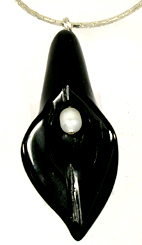
SIZE: Length: 37mm. Width: 17mm. Depth (Thickness): 8mm. Measurements approximate.
WEIGHT: 22.55 carats.
Chain: Contemporary silver electroplate 60 centimeters (24 inches). A wide variety of other chains are available upon request in sizes from 16 to 30 inches, and in metals ranging from gold and silver electroplate to sterling silver and solid 14kt gold as well as a bronze-toned copper chain. The default chain (absent contrary instructions) is silver electroplate, 24 inches. For a more authentic touch, we also have available handcrafted Greek black leather cords.
Note: If you prefer gold rather than silver, we can substitute a 14kt gold fill (5% gold over sterling silver) pin, and include a gold-electroplated chain in your choice of lengths.
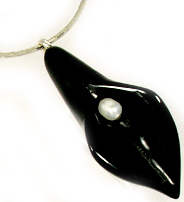
DETAIL: A handcrafted Siberian black onyx hand cut and polished into this gorgeous lily blossom, accented with a genuine freshwater pearl. In the ancient world, onyx was oftentimes more costly than either gold or silver, and one ancient reference recorded it as more valuable than sapphire. Onyx was used in ancient Egypt as early as the Second Dynasty (about 2800 B.C.) to make bowls and other items. Onyx also was amongst the artifacts recovered of Minoan Crete (about 1800 B.C.), notably from the archaeological discoveries at Knossos. Onyx became particularly famous in the hands of both the Greeks and Romans, who as described by the first century Roman historian and naturalist “Pliny the Elder”, crafted beautiful intaglio seals out of onyx. In Greco-Roman Mythology, onyx was believed to originated from the fingernails of Venus, the Goddess of Beauty.
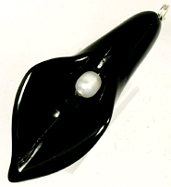
Celebrating this cultural legacy here's a handcrafted Siberian black onyx hand cut and polished into this gorgeous lily blossom, accented with two genuine freshwater pearls. The gemstone was hand crafted by a Russian artisan, part of an heritage renown for the production of the elaborate gemstones and jewelry of the Czars of Medieval, Renaissance, and Victorian Russia. As might be expected under magnification the gemstone does show the unmistakable characteristics of having been hand crafted. The coarseness of the handcrafted finish is considered appealing to most gemstone collectors, and is not considered a detriment, or to detract from the value of a gemstone.

These characteristics are not only expected of hand-finished gemstones, most serious collectors consider such gemstones more desirable, possessed of greater character and uniqueness when compared to today's cookie-cutter mass-produced machine-cut and finished gemstones. Unlike today’s computer controlled machine produced gemstones that approach flawlessness in a perfect finish, the cut and finish of a handcrafted gemstone such as these are the cultural legacy passed onwards by artisans who lived centuries ago. Such hand-crafted gemstones possess much greater character and appeal than today's mass-produced machined gemstones.
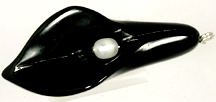
Handcrafted though it may be the gemstone has great luster and character, but that is not to imply that it is absolutely flawless. True, the blemishes it possesses are virtually invisible to the naked eye, and to the view of the casual admirer the gemstone is indeed seemingly without blemish. However in the accompanying photo enlargements you might be able to discern a few minute blemishes as well as occasional irregularities in the cut and finish. Of course the same may said about almost any natural gemstone. An absolutely flawless gemstone simply is not the rule in nature. Most absolutely flawless gemstones will upon close examination be revealed to be synthetic.
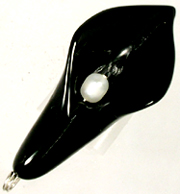
Furthermore these characteristics are not only expected of hand-finished gemstones, you must also consider that in times past the mining techniques even possible, let alone in practice, did not allow the ultra deep mining operations which are so commonplace today. Keep in mind that even in the fairly recent past mankind was more or less limited to surface deposits or near surface deposits of gemstones. Higher quality gemstones which today are routinely mined from beneath hundreds of meters, even kilometers beneath the earth's surface, were simply inaccessible then.
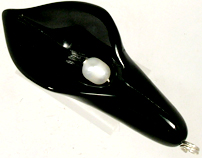
It is precisely for these reasons antique gemstone must be appreciated as antiques first, gemstones second. The relatively superlative quality of contemporary gemstones mined from deep beneath the earth's surface were simply not accessible in times past, or at least, only rarely so. However for most, the unique nature and character of these antique gemstones more than makes up for the blemishes found within the gemstones, as well as the cutting and finishing irregularities common to handcrafted gemstones, all of which are by and large are only visible under magnification.
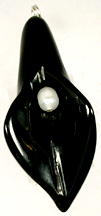
HISTORY OF ONYX: Onyx is the name for the black (most often with white banding) variety of chalcedony. It has been used since antiquity where it was highly prized as a cameo stone. The layered color structure allows the engraver to cut the subject in one color while creating a background of another. According to Greek Mythology, the origins of onyx are traced to the Goddess Venus’s fingernails. One day when Venus (the Greco-Roman Goddess of Beauty) lay asleep the mischievous Cupid (her son and the God of Love) cut her fingernails and flew away leaving the fingernail clippings scattered on the ground. Because no part of a deity could be permitted to die, the gods turned the fingernail clippings into stone which later became known as onyx.

In fact the name “onyx” draws its origin from the Greek language in which “onux” means fingernails. In the ancient world, onyx was oftentimes more costly than either gold or silver, and one ancient reference recorded it as more valuable than sapphire. Onyx was used in ancient Egypt as early as the Second Dynasty (about 2800 B.C.) to make bowls and other items. Onyx also was amongst the artifacts recovered of Minoan Crete (about 1800 B.C.), notably from the archaeological discoveries at Knossos. Onyx became particularly famous in the hands of both the Greeks and Romans, who as described by the first century Roman historian and naturalist “Pliny the Elder”, crafted beautiful intaglio seals out of onyx (see a spectacular first century example here).

Ancient Greek and Roman soldiers often wore a talisman of onyx, as it was believed that doing so would instill a sense of bravery in the soldiers. Oftentimes the talismans worn by Roman soldiers were carved with images of Hercules or Mars, the Roman God of War. Ancient historical accounts record that the Roman General Publius Cornelius Scipio (who defeated Hannibal at Carthage) frequently wore this gemstone. The Romans also believed that wearing onyx would enhance the growth of fingernails and regenerative skin growth. In nearby ancient Persia onyx was used by sorcerers and shamans who believed it enhanced intuition. In ancient India onyx was believed to calm the ardors of love, a belief which eventually was picked up by the Western World where onyx had the reputation of decreasing sexual desire.

The ancient Hindus also wore onyx to protect against the evil eye as it was believed that onyx had a trapped demon within. To the ancient Chinese, onyx was known as the "stone of sadness", and it was believed that even entering a mine where onyx was found might lead to terrifying dreams, doubts, and disputes. Onyx was also known to the ancient Hebrews. According to Genesis, onyx was found in the land of “Havilah”, "where the gold is", thought to refer to Egypt or Arabia. A precious commodity in Old Testament times, onyx is also mentioned frequently in the Bible, such as "Job regarded God's wisdom as a greater possession than even costly onyx." Onyx is also frequently cited as one of the twelve stones in the breastplate of the High Priest, Aaron, representing the twelve tribes of ancient Israel.

In the Medieval World onyx was believed useful in aiding the wearer to cure bad habits, and to help the wearer retain strength. However the beliefs of the ancient Chinese had spread to Europe by the Middle Ages, and onyx was also believed by many to bring bad luck, sadness, fear and images of madness in sleep, as well as to create discord and dispute. Medieval shamans and magicians believed that onyx would protect against misfortune and illness, and would prevent illusions, nightmares and confusion caused by evil spirits. Onyx was often used in magic to contact spirits of the dead, and as an aid to recall memories and visions of past lives. It was believed to “soften” barriers between the worlds, allowing travel between different planes of existence.

Shamans also believed that the stone could be used to summon friendly spirits to guide a dying soul on its journey to the next world. An onyx sphere was believed to protect the owner by providing a warning of impending danger. In the Renaissance onyx was believed to fill the wearer with a gift of eloquence (and was regarded with great value by public speakers and orators), particularly when expressing his or her love to a new romantic interest. It was also worn with the belief that it helped increase concentration and sharpen the wearer’s wits, and was also worn to enhance one’s spiritual inspiration. Onyx was also believed to bring unexpected good luck and opportunity to its owner and to protect them from the plots and ill wishes of their enemies.

Onyx is a variety chalcedony quartz, part of the agate family, and is formed in the gas cavities of lava. Generally the stone is black or black with white banding. Some onyx displays white and lighter reddish bands or ribbons against a brown background, this variety is known as sardonyx. When the onyx has a red base, it is known as carnelian-onyx. Throughout the history of the ancient world, gemstones were believed capable of curing illness, possessed of valuable metaphysical properties, and to provide protection. Found in Egypt dated 1500 B. C., the "Papyrus Ebers" offered one of most complete therapeutic manuscripts containing prescriptions using gemstones and minerals. Gemstones were not only valued for their medicinal and protective properties, but also for educational and spiritual enhancement.

In the ancient world it was believed that onyx gave courage and bravery to the wearer, would warn the wearer of impending danger, would enhance the intuitive and prophetical abilities of sorcerers and magicians, would act as a guide to the souls of the deceased, would enable mediums to communicate with the dead and recall past lives, would protect against the “evil eye”, and would also cool the flames of sexual desire. It was also believed to enhance the growth of fingernails and skin, to enhance intelligence and the ability to concentrate, would help the wearer break bad habits, enhance the wearer’s oratorical abilities, and would protect the wearer from evil spells and nightmares.

Modern practitioners believe that onyx is useful in healing old emotional wounds and enabling the wearer to move ahead by forgetting the past experiences of bad relationships, and as well help form new romantic relationships by improving expressive abilities between lovers. For absent-minded people onyx is regarded as being very helpful in increasing concentration levels and calming the mind amidst the chaotic conditions of modern life, even so far as being recommended for the treatment of various neurological disorders. Some modern practitioners claim that onyx can help physical ailments such as hearing problems, heart trouble, and ulcers. It is also believed to encourage new hair growth for those suffering from baldness, and is also believed an aid to those who are trying to break bad habits. Onyx is also said to lend comfort in unfamiliar surroundings, alleviating feelings of loneliness and alienation.
PEARL HISTORY: The pearl is likely the first gemstone known to prehistoric man. A fragment of the oldest known pearl jewelry, found in the sarcophagus of a Persian princess who died in 520 B.C., is displayed in the Louvre in Paris. Pearl necklaces have also been found by archaeologists within the sarcophagus of ancient Egyptian mummies. In the ancient world, natural salt-water pearls were principally harvested from the Persian Gulf, the Gulf of Manaar (Indian Ocean), and the Red Sea. Man has adorned him(her)self with pearls for at least 6,000 years. In the ancient gemstone markets of Babylon, 5,000 years ago, pearls were prized possessions believed to restore youth. Written accounts of pearl jewelry exist both in third millennium B.C. Indian and Chinese texts.
The ultimate origin of pearls in the ancient world was the source of many competing myths and legends. Ancient Chinese written accounts tell that pearls fell from the skies when dragons above fight (the pearls droplets of dragon saliva). Alternate ancient Chinese legends stated that pearls were found in the brains of dragons. As early as the Han Dynasty (200 B.C.) the ancient Chinese hunted extensively for seawater pearls in the South China Sea. The ancient Hindus believed that pearls were dewdrops that fell at night into the sea and collected in oysters. The pearl (“mukta” in Sanskrit) was associated with many Hindu deities, the most famous being the Koustubha which Lord Vishnu wore on his chest. According to the accounts of Marco Polo, the kings of Malabar (near present-day Calicut, Kerala, India) wore a necklace of 108 rubies and 108 precious pearls which was given from one generation of kings to the next.
The spherical shape of some pearls also led many ancient cultures to associate this gem with the moon. To the Ancient Persians, pearls symbolized the moon and its magical powers, the moon instilling pearls with its celestial glow and mystery. In some Muslim legends, the pearl is God's first act of creation. Many ancient Mediterranean cultures believed pearls were formed when an angel's tears fell into the open oyster shell, or alternatively were the tears of gods. However according to one ancient Greek legend, pearls were formed by lightning striking the ocean. Another ancient Greek legend posited that pearls were dew from the moon collected by oysters that opened their shells as they floated on the sea at night.
Even the Bible referred to the high value of pearls when Christ said, "the kingdom of Heaven is like a merchant searching for beautiful pearls, who, finding one of great cost, sells all his possessions to buy it.” Also according to biblical accounts, the twelve gates of the (post-apocalyptic) New Jerusalem are each made of a single pearl (the “pearly gates” of heaven). "And the twelve gates were twelve pearls; every gate was of one pearl, and the streets of the city were pure gold, as if transparent glass." Likewise in Islamic Scripture, the Koran specifies that the rewards of paradise include pearls. “God will admit those who believe and work righteous deeds, to gardens beneath which rivers flow. They shall be adorned therein with bracelets of gold and pearls; and their garments there will be of silk.”
The Greeks thought that pearls held the essence of love and beauty. A pair of pearl earrings owned by Cleopatra were estimated by the ancient Roman Historian Pliny to have a value of about 60 million sesterces (equivalent to 10,000 pounds of gold, $40 million in today’s value). Who can forget the tale of Cleopatra dissolving one of these two pearls in the presence of Marc Antony, so she could “taste” the essence of pearl. Throughout ancient Rome and into medieval Europe, pearls always decorated crowns and robes of kings and queens. In fact, all of Rome and the entire Roman Mediterranean were “pearl crazy”. According to the first century historian and naturalist “Pliny the Elder” (who wrote that pearls were created from the morning dew), the craze started when a portrait of Pompey the Great was rendered in pearls to mark the occasion of his third triumph (celebratory parade) over the defeat of Mithridates, King of Pontus (present day Turkey on the Black Sea).
As well, amongst the spoils of the war displayed during the parade were numerous pearls set in crowns and other jewelry. In the following fashion frenzy, the women of Rome preferred to wear two or three pearls dangling from their ears, so they would rattle as they moved, attracting attention to the fact that they were wearing pearls. Roman matrons had pearls woven into their garments, and even used pearls to decorate their couches. The third wife of the Roman Emperor Caligula reportedly owned pearl jewelry with a value of 40 million sesterces ($25 million in today’s dollars). In fact it was rumored within Rome itself that the real purpose of Julius Caesar’s invasion of Britain was to gain control of the fresh water pearls that were found there, and that "in comparing their size he sometimes weighed them with his own hand". In 46 B.C., when Caesar returned from Egypt to Rome where he was joined by Cleopatra and their infant son, he dedicated a cuirass made completely of British pearls in the Temple of Venus Genetrix.
In the ancient world, shamans used pearls to help enhance their psychic and divination powers, and to connect with lunar gods and gods of the oceans and seas. During the Middle Ages it was believed that pearls possessed the power to protect the wearer in battle, and so it was not uncommon to find suits of armor for the nobility encrusted with pearls. In Renaissance Europe the appetite for pearls became so great that laws forbade anyone other than royalty or the very privileged classes from even wearing pearls. Pearls were the exclusive domain of the crown and select nobility! The appetite for pearls was enormous, and the natural salt water pearl beds of Central and South America were ravaged.
The principal salt-water oyster beds remaining which still produce solid pearls today lay in Australia, the Persian Gulf, along the coasts of India, Sri Lanka, and in the Red Sea. The principle sources for cultured saltwater pearls today are Australia, Indonesia, Tahiti, the Philippines, and Burma. China, the USA, and Bavaria are the principle sources for freshwater pearls. Unknown today to most, America exported to Victorian Europe large numbers of very high quality freshwater pearls from the Ohio, Mississippi, and Tennessee River basins. So many gems were exported to Europe that the New World quickly gained the appellation "Land of Pearls." Except for the freshwater production of small specimens, genuine solid pearls are by and large only obtainable as antiques.
From the 1930’s to present day, cultured pearls from Japan have predominated the marketplace. Most people generally credit the “invention” of cultured pearls with Kokichi Mikimoto in Japan at the turn of the twentieth century. However eight hundred years ago in China, monks planted carvings of Buddhist deities into river mollusks in order to be coated with pearl-like layers, the first recorded cultured “pearls”. Since the 1990’s, with the decline of Japanese cultured pearl production due to pollution and disease, China has increasingly been the dominant supplier of cultured pearls, both freshwater and saltwater. However it is still generally believed that the finest cultured pearls ever produced, with the exception of limited quantities produced in Tahiti, were produced in Japan between 1930 and 1970.
Pearls are found in a wide variety of colors and shades, the most highly valued being white, black, rose, and cream. Black pearls are very rare and highly prized, and are typically found only in Tahiti and the Cook Islands. Also especially prized are rose-colored pearls found in India, Sri Lanka (Ceylon), and the South Pacific. Pearls are formed as lustrous concretion produced principally by certain bivalve mollusks (as well as scallops, abalone, conchs, and even snails). A pearl consists almost entirely of nacre (also known as “mother-of-pearl”), which is the substance forming the inner layers of the mollusk shells. Both marine and freshwater mollusks produce pearls. In nature a pearl starts when an irritant or parasite has managed to get inside the mollusk’s shell. The irritant or parasite serves as the nucleus of the pearl which results when nacre is deposited layer-upon-layer by the mollusk around the irritant or parasite as a defense mechanism.
A natural pearl is very rare in nature, and occurs only once in 15,000 mollusks. Cultured pearls are formed when man intercedes, depositing the nucleus of a new pearl inside the tissue of the mollusk, thus “artificially” inducing the mollusk to create pearl. Freshwater pearls are produced by mussels in various parts of the world, though China is the principal producer of freshwater pearls. However pearl production is a carefully fostered industry in central Europe, and the forest streams of Bavaria, in particular, are a source of choice freshwater pearls. Gem-quality freshwater pearls are also produced in the Mississippi River. Throughout the history of the ancient world, gemstones were believed capable of curing illness, possessed of valuable metaphysical properties, and to provide protection.
Found in Egypt dated 1500 B. C., the "Papyrus Ebers" offered one of most complete therapeutic manuscripts containing prescriptions using gemstones and minerals. Gemstones were not only valued for their medicinal and protective properties, but also for educational and spiritual enhancement. In the ancient world pearls were thought to signify charity, faith and innocence. They were believed to help to provide a focus to ones attention, and enhance personal integrity. The pearl was known as a stone of sincerity. Pearls were believed to inhibit rowdy behavior. The luster was thought to provide a reflection of the inner self, so that one could perceive oneself as others did. In the ancient cultures of Asia pearls were thought to quicken the laws of karma and to cement engagements and love relationships. They were also used as a talisman to keep children safe. Pearls were also powdered and used as a medicine to promote mental health, as well as an aid for stomach, stomach ulcer, spleen, and intestinal tract problems.
Domestic shipping (insured first class mail) is included in the price shown. Domestic shipping also includes USPS Delivery Confirmation (you might be able to update the status of your shipment on-line at the USPS Web Site). Canadian shipments are an extra $16.99 for Insured Air Mail; International shipments are an extra $20.99 for Air Mail (and generally are NOT tracked; trackable shipments are EXTRA). ADDITIONAL PURCHASES do receive a VERY LARGE discount, typically about $5 per item so as to reward you for the economies of combined shipping/insurance costs. Your purchase will ordinarily be shipped within 48 hours of payment. We package as well as anyone in the business, with lots of protective padding and containers.
We do NOT recommend uninsured shipments, and expressly disclaim any responsibility for the loss of an uninsured shipment. Unfortunately the contents of parcels are easily “lost” or misdelivered by postal employees – even in the USA. If you intend to pay via PayPal, please be aware that PayPal Protection Policies REQUIRE insured, trackable shipments, which is INCLUDED in our price. International tracking is at additional cost. We do offer U.S. Postal Service Priority Mail, Registered Mail, and Express Mail for both international and domestic shipments, as well United Parcel Service (UPS) and Federal Express (Fed-Ex). Please ask for a rate quotation. We will accept whatever payment method you are most comfortable with. If upon receipt of the item you are disappointed for any reason whatever, I offer a no questions asked return policy. Send it back, I will give you a complete refund of the purchase price (less our original shipping costs).
We travel to Russia each year seeking antique gemstones and jewelry from one of the globe’s most prolific gemstone producing and cutting centers, the area between Chelyabinsk and Yekaterinburg, Russia. From all corners of Siberia, as well as from India, Ceylon, Burma and Siam, gemstones have for centuries gone to Yekaterinburg where they have been cut and incorporated into the fabulous jewelry for which the Czars and the royal families of Europe were famous for. My wife grew up and received a university education in the Southern Urals of Russia, just a few hours away from the mountains of Siberia, where alexandrite, diamond, emerald, sapphire, chrysoberyl, topaz, demantoid garnet, and many other rare and precious gemstones are produced. Though perhaps difficult to find in the USA, antique gemstones are commonly unmounted from old, broken settings – the gold reused – the gemstones recut and reset.
Before these gorgeous antique gemstones are recut, we try to acquire the best of them in their original, antique, hand-finished state – most of them centuries old. We believe that the work created by these long-gone master artisans is worth protecting and preserving rather than destroying this heritage of antique gemstones by recutting the original work out of existence. That by preserving their work, in a sense, we are preserving their lives and the legacy they left for modern times. Far better to appreciate their craft than to destroy it with modern cutting. Not everyone agrees – fully 95% or more of the antique gemstones which come into these marketplaces are recut, and the heritage of the past lost. But if you agree with us that the past is worth protecting, and that past lives and the produce of those lives still matters today, consider buying an antique, hand cut, natural gemstone rather than one of the mass-produced machine cut (often synthetic or “lab produced”) gemstones which dominate the market today.
Our interest in the fabulous history of Russian gemstones and the fabulous jewelry of the Czar’s led to further education and contacts in India, Ceylon, and Siam, other ancient centers of gemstone production and finishing. We have a number of “helpers” (family members, friends, and colleagues) in Russia and in India who act as eyes and ears for us year-round, and in reciprocity we donate a portion of our revenues to support educational institutions in Russia and India. Occasionally while in Russia, India, Siam, and Ceylon we will also find such good buys on unique contemporary gemstones and jewelry that we will purchase a few pieces to offer to our customers here in America. These are always offered clearly labeled as contemporary, and not antiques – just to avoid confusion. We can set most any antique gemstone you purchase from us in your choice of styles and metals ranging from rings to pendants to earrings and bracelets; in sterling silver, 14kt solid gold, and 14kt gold fill. When you purchase from us, you can count on quick shipping and careful, secure packaging. We would be happy to provide you with a certificate/guarantee of authenticity for any item you purchase from me. There is a $2 fee for mailing under separate cover. Please see our "ADDITIONAL TERMS OF SALE."

